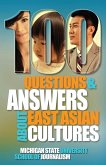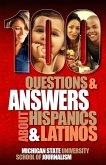"100 Questions and Answers About Gen X and 100 Questions and Answers About Millennials" is a double guide in the Michigan State University School of Journalism series on cultural competence. This guide has sections on demographics, seismic events, values, technology, pop culture, education, work, money, sex and love, and politics. The guide is written for those who want authoritative answers about these important generations and how we all work together. It is a starting point for people in business, educators, government, marketing, law enforcement, human resources and journalism who want to get a fast grounding. The guide suggests resources for those who then want greater depth. Questions include: When was Gen X born? How many Gen Xers are there? Who are Xennials? Are Millennials good at multitasking? Why has college debt become such a problem for Millennials?
Bitte wählen Sie Ihr Anliegen aus.
Rechnungen
Retourenschein anfordern
Bestellstatus
Storno









